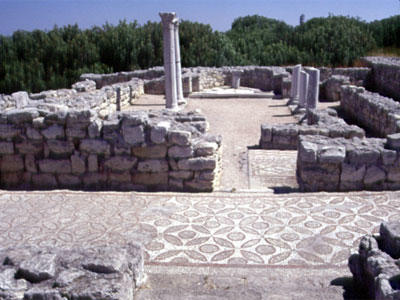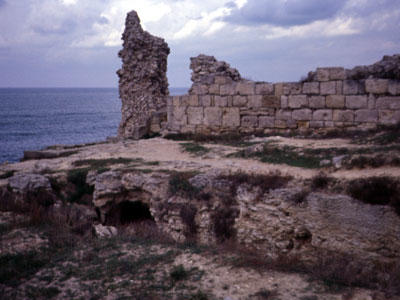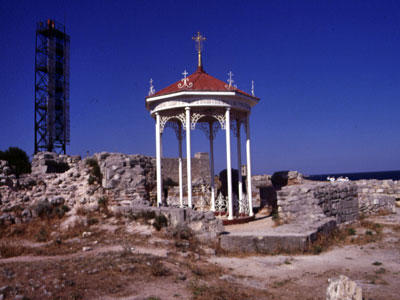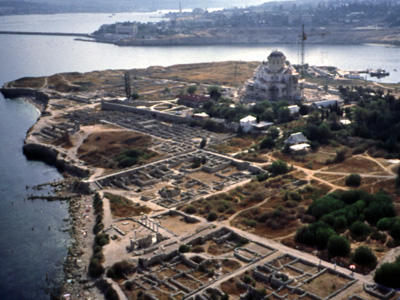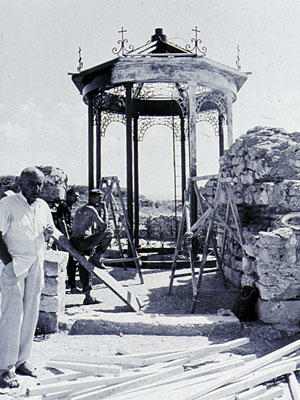Chersonesos, on the Crimean Peninsula on the Black Sea, was founded by Greek settlers in the fifth century B.C. and was occupied during the Hellenistic, Roman, and Byzantine eras. It is a uniquely preserved example of an ancient landscape with over 140 stone farmhouses, a grid of country roads, and a network of forts from the Roman and Byzantine periods. In 1400, the city was destroyed by Mongols and not reoccupied. Structures that have survived are often subject to the elements and to crowds of unsupervised visitors. Erosion of the coastline of the Black Sea has undermined major architectural monuments, including the Uvarov Basilica where Christianity was first introduced to the Slavic world. The rapid expansion of Sevastopol, located on a nearby bay, has also threatened the historic landscape of the territory. In 1996, Sevastopol was declared an “open city,” thus allowing foreigners to visit the city and access the site. This accelerated the region’s development and multiplied the tourist volume to ancient Chersonesos.
1996, 1998 and 2002 World Monuments Watch
The site, stewarded by the National Preserve of Tauric Chersonesos, was for many years threatened by urban sprawl and costal erosion. Monuments were exposed to severe climate, improper excavation, overzealous conservation, and neglect. Inclusion on the World Monuments Watch in 1996, 1998, and 2002 assisted in the protection of the site against urban sprawl by convincing real estate developers and the city administration to cooperate with preservation and rescue efforts prior to commercial or private development. WMF received support from American Express to undertake research and conservation planning for the site.
Chersonesos is a significant archaeological site on the Black Sea. It was founded as a Greek colony in the fifth century B.C. and was inhabited until the fourteenth century. In 988, Volodymyr, Prince of Kyivan Russia was reputedly baptized here, marking the start of the Christianization of Slavs. Chersonesos’ monuments and artifacts are among the most complete and coherent remnants of Hellenistic, Roman, and Byzantine civilizations in the region. The city walls are the largest standing monuments of classical antiquity on the Black Sea, and the ancient theater is the only one known in the region; early Hellenistic grave monuments preserve some of the finest known examples of ancient Greek painting.

